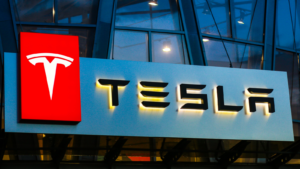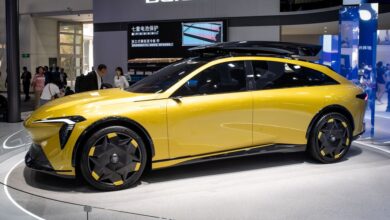3 EV Stocks to Buy on the Dip: May 2024

The electric vehicle market may not be in such dire shape after all, creating opportunity for some of the top EV stocks to buy.
First, as I noted earlier this week, “the death of electric vehicles has been overly exaggerated, according to Forbes.com.” They added, “Data from The International Energy Agency’s Global EV Outlook 2024 makes vibes-based reporting on the demise of EV sales look silly – global EV sales could hit 17 million in 2024, meaning more than one in five cars sold worldwide will be electric. Surging demand for clean, cheap EVs across the rest of this decade will completely change the global auto industry. By 2035, IEA projects 50% of all cars sold globally will be EVs.”
Second, EV stocks such as XPeng (NYSE:XPEV) are seeing solid growth. In the first quarter of 2024, the company delivered 21,821 vehicles. While that was down from the 60,158 delivered from the last quarter of 2023, it is up 19.7% year over year. Plus, it expects to deliver about 29,000 to 32,000 vehicles in the second quarter, with the low end representing growth of about 25%.
While XPEV leads our list of top EV stocks to buy based on these numbers, investors may also want to look into these three companies.
BYD Co. (BYDDF)
Source: shutterstock.com/Trygve Finkelsen
After finding strong double-bottom support dating back to late 2022, BYD Co. (OTCMKTS:BYDDF) is just starting to pivot higher. From its last traded price of $28, I’d like to see it break above prior resistance at $32 a share.
The company noted passenger vehicle sales were up 23.64% YTD to 936,446, with electric sales up about 18% to 434,579. Sales of its plug-in hybrids were up by nearly 30% to 501,867 year to date. In April, total vehicle sales were up 50% year over year to 313,245, with EV sales up 29% to 134,465.
Plus, as noted by InvestorPlace contributor Vandita Jadeja, “New launches and lower-priced models have made BYD Company one of the most popular EV makers in the world. There is no stopping its aggressive expansion plans and it could beat Tesla again in the coming quarters. The stock is a strong buy before it skyrockets to new heights.”
Tesla (TSLA)

Source: Vitaliy Karimov / Shutterstock.com
As I said on Monday, “It’s time to buy the fear in Tesla (NASDAQ:TSLA). Granted, sales have slipped, but it’s still dominating the EV market. And, as noted by Bernstein analysts, first-quarter deliveries were dire, but the margins were better than expected.”
By Tuesday, TSLA was up about $11.65 a share, aided by its semitruck news. Reportedly, Tesla’s Semi is still on track for production-spec deliveries to customers by 2026. Tesla executive Dan Priestly added “We’re building a factory in Nevada that is being ramped in 2026 for customer deliveries and ramping to eventual target capacity to 50,000 units a year,” as quoted by Yahoo Finance.
Morgan Stanley also reiterated its overweight rating on the stock, with a price target of $310. “The investment firm’s valuation of Tesla stock is based on a detailed forecast of the company’s business segments and their expected performance by the year 2030,” added Investing.com.
Nio (NIO)

Source: Freer / Shutterstock.com
Another one of the top EV stocks to buy, Nio (NYSE:NIO) rallied from a low of about $3.61 to a high of $6. Now consolidating at $5.25, if it can break above double-top resistance at $6, it could test $7.50.
Helping, JPMorgan recently upgraded the stock from underweight to neutral. The firm believes NIO is benefiting from its move into batteries and from the Chinese government’s efforts to reignite EV demand. NIO sales are also accelerating, with April deliveries up 134.6% year-over-year. Year to date, Nio delivered 45,673 vehicles, a 21.2% jump year over year, as well.
It also launched its newest 2024 ET7, a premium smart electric sedan. Plus, Nio says it’s on track to make two new models for the European EV market. In addition, China said it has plans to provide auto owners with incentives to buy EVs, as noted by MarketWatch.com. “China plans to pay car owners up to 10,000 yuan, or nearly $1,400 at current exchange rates, if they replace their cars with electric or hybrid vehicles through the end of this year, according to a report in The Wall Street Journal.”
On the date of publication, Ian Cooper did not hold (either directly or indirectly) any positions in the securities mentioned. The opinions expressed in this article are those of the writer, subject to the InvestorPlace.com Publishing Guidelines.



